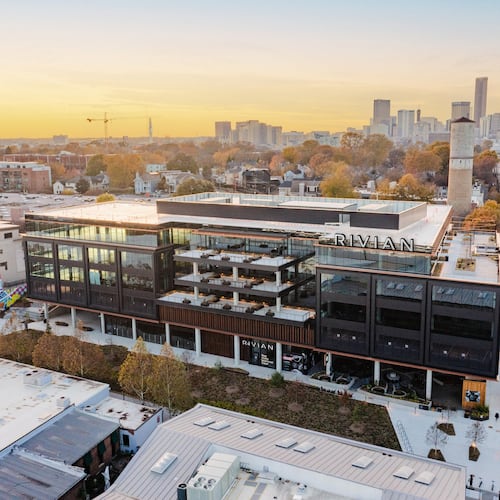WHAT IS A CID?
Community Improvement Districts or CIDs are generally founded on the idea of bypassing government red tape to fund and execute projects.
It usually takes a majority of commercial property owners in an area to agree to form a CID, and they must represent 75 percent of the total value of the district property.
CIDs have initiated a number of projects from Fairburn to Duluth, including improving traffic flow on Peachtree Boulevard in Buckhead, spending $82 million on sidewalk improvements in Midtown and hiring security guards to patrol Norcross-area shopping centers.
Money used to launch these projects comes from the additional tax on commercial property owners within the CID.
Often, the money is used to lay the groundwork, such as compiling engineering and feasibility studies for a road widening. When the study is complete, the CID can then pitch the idea for county, state or federal assistance in the form of a grant. All grant money is funneled through the city or county of jurisdiction, and it is subject to rigid accounting standards.
There are more than a dozen CIDs in the metro Atlanta area. The Cumberland CID covers about nearly 6 square miles, including Cumberland Mall and the I-75/I-285 interchange. CID money has been combined with public grants and tax dollars to fund high-profile projects such as the Cumberland Boulevard loop and the Cobb Parkway Bridge widening.
Property owners will pay almost half of Cobb County’s $17.9 million annual contribution to financing for a new Atlanta Braves ballpark, according to a financial summary released Thursday.
Property tax rates won’t rise, but the county plans to shift $8.6 million now being used to pay off parkland bonds toward stadium debt. The parkland bonds, issued years ago, will be paid off in three years — just as the new stadium nears completion.
“It just perpetuates the idea that there’s nothing more permanent than a temporary tax increase,” said Brett Bittner, leader of the Libertarian Party for Cobb County and Georgia.
The rest of the cash to pay the county’s share will come from new taxes and fees on certain businesses or consumers.
All told, the county would pay $300 million, or 45 percent of the total cost of the ballpark, with the Braves paying the rest. However, Cobb’s share ultimately will rise to $537 million with interest payments on debt over 30 years.
County officials on Thursday released only a summary of the agreement, saying the formal Memorandum of Understanding is not yet completed. The Braves announced Monday that they will abandon Turner Field when its lease expires in 2016 and relocate on 60 acres near interstates 75 and 285.
About 15 of the acres will be dedicated to the ballpark. The rest is to be used for mixed-use development that the Braves will fund and control.
In addition to diverting property taxes, Cobb also will generate money for its share through:
— A new 3 percent tax for car rentals in unincorporated parts of the county
— A $3 per night surcharge on hotel rooms in the area surrounding the new ballpark, known as the Cumberland Community Improvement District
— A 3 mill tax increase on businesses and apartment complexes in the Cumberland CID
— Reallocation of nearly $1 million in hotel-motel tax already coming into the county
Cobb Commission Chairman Tim Lee, who helped negotiate the deal, said the property tax being redirected is negligible, totaling about $20 per household every year.
“The majority … is coming from folks willing and able to make the investment because they see the return on that investment and believe it will be significant,” Lee said, referring to businesses in the Cumberland CID. “Homeowners have a minimum investment. We believe it will reap significant rewards.”
Lee acknowledged that the 180 commercial property owners in the Cumberland CID will pass on tax hikes to consumers, but he called that “splitting hairs.”
“Businesses don’t pay taxes, consumers pay for everything,” Lee said. “(But) I just think that’s splitting hairs over the way the U.S. financial system is set up.”
The total cost of the ballpark is $672 million, which will pay for the 60 acres, site preparation, design and construction.
The Braves contribution to the facility is $280 million upfront, plus $6.1 million a year toward debt service.
The Cobb-Marietta Coliseum Authority, a little known entity that has issued bonds to build the Cobb Energy Performing Arts Centre and the Cobb Galleria Centre, will issue bonds to pay the public’s share. Jim Pehrson, the county’s chief financial officer, said the authority will likely sell the bonds early next year.
Much of the money the Braves contribute for the debt service on those bonds will come from lucrative revenue streams at the ballpark: $1.5 million in naming rights; $1.5 million in parking revenue; and $100,000 in advertising revenue.
The team will also pay $3 million in annual rent and has agreed to cover any construction overruns.
Braves chairman and CEO Terry McGuirk said team executives “did an excellent job of negotiating, making sure that all of the elements of what we wanted to accomplish would be in the deal.” Braves officials also said the new stadium will increase revenue from an array of sources and that they expect a better fan experience to increase attendance.
Andrew Zimbalist, an economics professor at Smith College who has written several books on the public financing of stadiums, said the Braves contribution is “larger than is typical.” He said rent and revenue sharing by teams is usually a lot smaller, “sometimes zero.”
“It just seems to me … this is a real estate play by the Braves,” Zimbalist said. “They’ll be getting a bunch of acres to develop around the ballpark that they must think will be very lucrative. Given the Braves are contributing a pretty healthy portion to the financing and revenue share, there must be something else they’re getting.”
In addition to a new tax on Cumberland CID businesses that will go toward debt payments, the organization has agreed to put up $10 million for transportation improvements, which includes things such as sidewalks, a pedestrian bridge linking the mall with the ballpark site, signage and landscaping.
Kennesaw State University economist J.C. Bradbury, who has studied the economics of baseball, said it makes sense that much of the funding burden will fall on the business district that will benefit the most. But he said all Cobb taxpayers will pay.
The new car rental tax, for example, will be paid mostly by Cobb residents and businesses.
“No one flies to Atlanta, takes public transportation all the way to Cobb County and rents a car,” he said. “This is a tax on people with car problems.”
And Bradbury called the $8.6 million in redirected property taxes “substantial.”
“There’s always an opportunity cost,” he said. “There could be other things done, like opening libraries on Sundays … or giving constituents a rebate.”
Cobb County commissioners are expected to vote on the deal Nov. 26.
About the Author
Keep Reading
The Latest
Featured


